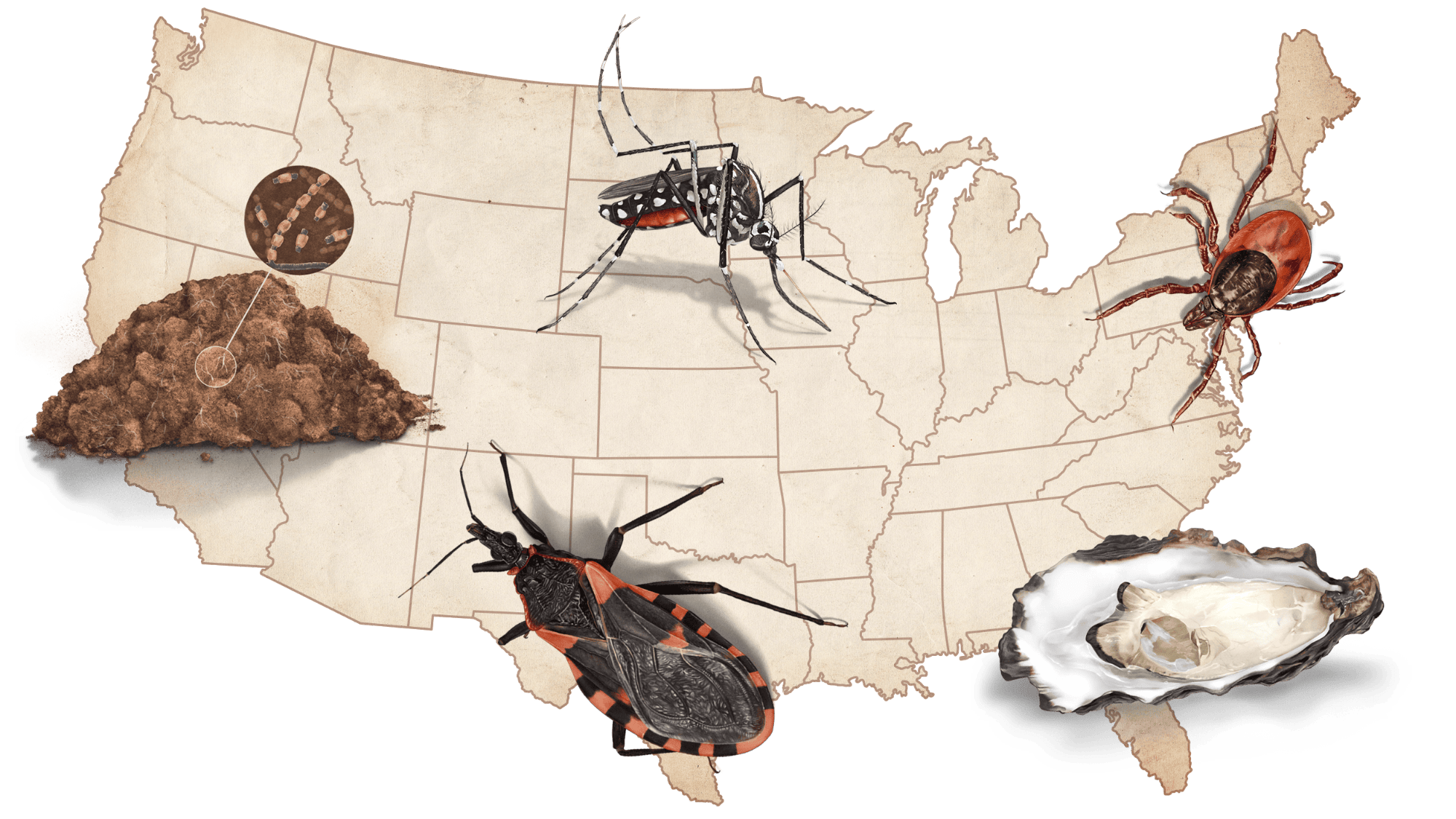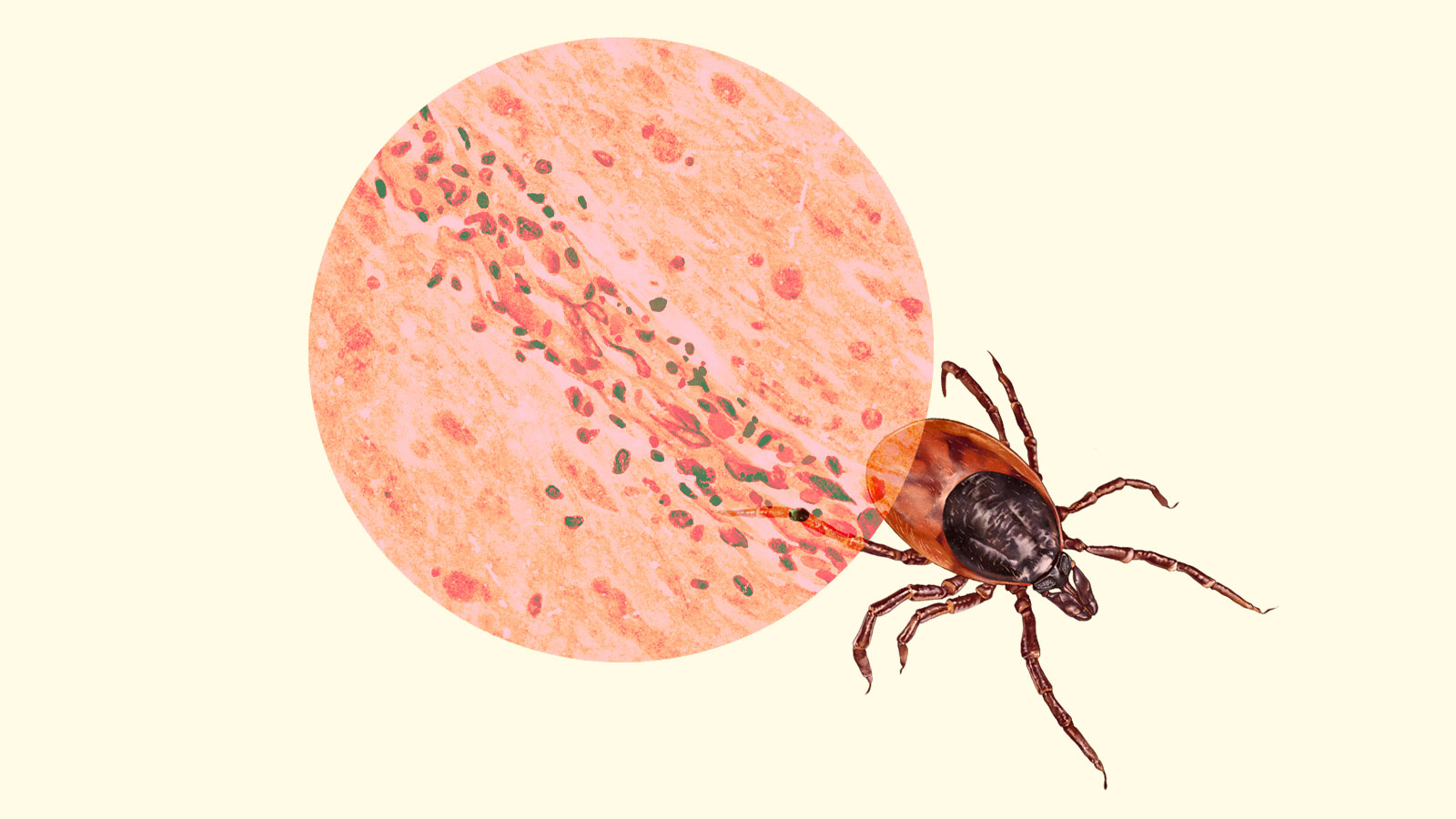In early May well, a lady in her 90s was hospitalized in Connecticut with a odd assortment of indicators: confusion, nausea, chest soreness, chills, and fever. Two months afterwards, on May perhaps 17, she died. The culprit was a blacklegged tick, a minuscule arachnid about the dimensions of a sesame seed when entirely grown.
Blacklegged ticks, commonly identified as deer ticks, have a broad assortment of illnesses. They are most effective regarded for carrying Lyme disease, a sickness that causes a rash, fatigue, fever, and other disagreeable, in some cases debilitating, indications. The tick that killed the girl in Connecticut was carrying a sickness that is considerably rarer and deadlier than Lyme: It is termed Powassan virus, or POWV. Blacklegged ticks carrying Powassan kill one in 10 of the men and women who produce extreme indicators. Fifty percent of these who endure a serious bout of the ailment proceed to expertise the effects of the sickness, such as decline of muscle mass and recurring complications, for the relaxation of their lives.
The fatality in Connecticut is the 2nd Powassan-associated dying in the United States this 12 months. In April, anyone in Maine died in the medical center after contracting the illness from a tick chunk. Two fatalities in the span of a couple of months might not sound like a lot, but they signify what seems like a considerable rise in the disorder which is about gurus. The 134 instances documented in the U.S. between 2016 and 2020 symbolize a number 300 per cent increased than in the past five-year time period. And the scenarios that are noted to the Centers for Disease Command and Avoidance, or CDC, are most likely the symptomatic instances, commonly the kinds that land individuals in hospitals.
The legitimate extent of the virus’ achieve all through the U.S., gurus instructed Grist, could be larger than what’s documented by the CDC. Quite a few cases of Powassan are asymptomatic and, even when a affected person offers with indications, medical doctors could not correctly diagnose the sickness because of its rarity. Experts count on cases of Powassan virus, and other health conditions that folks contract from carriers in the all-natural ecosystem, to proceed to increase as the local climate continues to modify thanks to greenhouse fuel emissions. Warming temperatures are helping ticks shift their ranges into new parts, and hotter winters are serving to the bloodsuckers survive from a person 12 months to the subsequent. Most Powassan scenarios have been identified in the Great Lakes area and the Northeast, but circumstances have also cropped up in states as far flung as North Dakota and North Carolina.
So when’s the correct time to freak out about Powassan virus? Tick scientists have differing thoughts on how significant of a community wellness threat Powassan is at the moment. But the basic takeaway is that Powassan is a rising concern, and, if it ended up to become a extra typical condition in the U.S., it would be particularly bad information.

In New York condition, Saravanan Thangamani, director of the SUNY Center for Vector-Borne Diseases at SUNY Upstate Professional medical College, runs a tick screening initiative out of his lab. When someone finds a tick in their backyard or crawling up their leg, they can send it off to Thangamani’s lab to have it examined. By cataloging all those submissions, Thangamani discovered that the lessen Hudson Valley in New York point out has come to be a hotspot for Powassan virus in ticks. But he even now doesn’t know what components are accountable for the uptick in Powassan virus among the the arachnids in that space. In point, no 1 even is aware of exactly exactly where ticks decide up Powassan virus — it is however an open space of investigation.
“We do not know the place most of it arrives from,” Richard Ostfeld, a disease ecologist at the Cary Institute of Ecosystem Experiments in New York, instructed Grist. “There’s some proof now that small-tailed shrews may well be a pretty critical reservoir host for this,” he reported, incorporating that white-tailed mice, skunks, raccoons, weasels, and woodchucks have also been regarded to transmit Powassan to ticks, which can then in switch bite individuals and infect them with the virus. “But we really do not know regardless of whether 1 of those people hosts is more vital than some others in phrases of infecting ticks,” he explained.
Placing aside how minimal we know about where the virus will come from, and why the ticks that carry it have a tendency to accumulate in specific spots, Thangamani says his investigate shows that there is prospective for Powassan to develop into more common in coming many years. “In my view, men and women must be very pretty concerned,” he explained. “There’s potential for it to develop into a significant community wellbeing hazard.” Incidents of Powassan virus in ticks he’s examined in the lower Hudson Valley have amplified in between 3 and 5 per cent in the three decades that he’s been amassing citizen information. It’s also feasible that other tick species, like the American canine tick or the lone star tick, can have a edition of the Powassan virus, far too. As ticks keep on to increase their range across the place, Thangamani concerns that more individuals could occur into contact with Powassan-carrying ticks.
Ostfeld is not so guaranteed that the enhance in human conditions documented by the CDC is proof that there is been a enormous surge in the quantity of ticks carrying Powassan virus all over the U.S. The boost could be due to a lot more doctors becoming knowledgeable of tick-borne ailments and tests individuals for them, random prospect, or a range of other things. “I’m very at ease expressing, ‘yes, it’s pretty regarding,’ and I’m cozy expressing ‘it seems to be like it’s almost certainly going up,” he stated. “But I’m not heading to swear on the origin of species that we have a statistically sizeable trend.”
But Ostfeld emphasized that now is the time for dedicating much more means and consideration to knowledge Powassan and how it functions in the natural environment. “It’s quite pretty challenging to get funding from federal companies for something like Powassan virus since of its rarity,” he reported. “But a single could argue that its rarity is precisely the time when we need to be figuring out a lot more of the fundamental biology of this virus and which things influence human publicity so we’re ready if and when it results in being more typical.”
Absence of funding for tick-borne ailments is an problem the Minnesota Division of Health and fitness has operate into. In Minnesota, community awareness about Powassan and quite a few other tick-borne diseases is low, public health and fitness officers told Grist. But methods to transform that, and to expand the state’s comprehension of tick-borne health problems in basic, have been stretched slender in between a lot of distinct community wellbeing priorities, most notably the ongoing COVID-19 pandemic. “We don’t have the methods,” Erin Kough, an epidemiologist at the vector-borne condition device at the Minnesota Department of Health, explained to Grist, “but we know that if modifications in climate grow the territory of a tick then that suggests we’re heading to get conditions in new sections of our state.”




